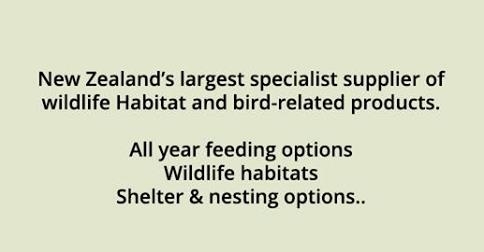Bird Feeders Buying Guide
A bird table can be an attractive addition to your garden and a welcome source of food for birds. A bird table is suitable for year-round feeding Bird tables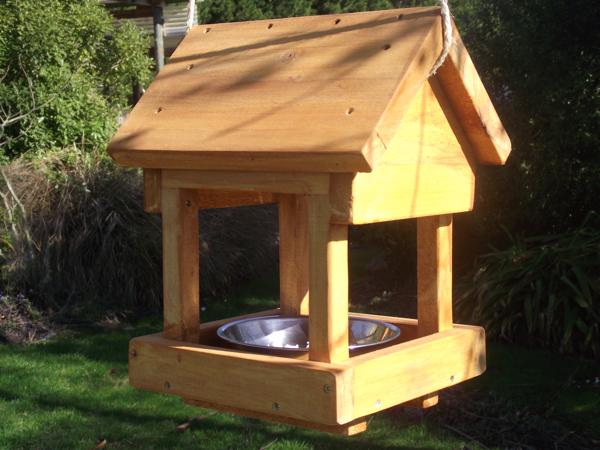
- All Creative Woodcraft's bird tables are made from locally sourced New Zealand timbers. Aesthetics aside, it is most important that the bird table is practical – a basic platform with edges and drainage channels with or without a roof is by far the best. A bird table does not need to be complicated – the birds are only interested in a good supply of food in a safe, sheltered place.
- Check there are no sharp edges, which could endanger birds’ feet, and that there are no moving or ‘scissoring’ joints, in which a bird may be trapped.
- Avoid bird tables with a nest box in the roof – encouraging birds to feed right by an active nest is not wise.
- ‘Rustic’ thatched bird tables can quickly go bald in spring as the birds take the thatch to build their nests.
- Some bird tables incorporate a bird bath in the table top. These can act as a great way to encourage nectar feeding birds by using sugar water.
- For ground-feeding birds, use a low-level table rather than place food directly on the ground. Legs in each corner should hold the table around 10 cm off the ground to allow the grass to ‘breathe’, and it should be moved fractionally each time you put out food. This prevents both the build-up of droppings in one part of the garden and damage to your lawn.
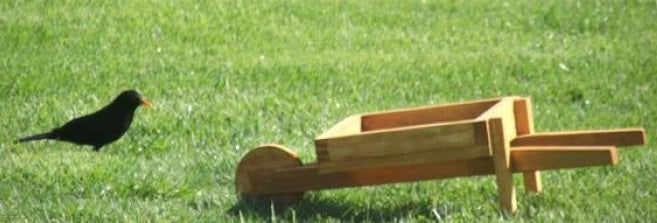
- A quiet location with a good view from the house is normally the best place for a bird table. This allows you to enjoy observing the garden birds while they feed with little disturbance.
- Choose a site sheltered from extremes of weather, but where the birds have a good all-round view, so they can see that they are safe from predators while they feed.
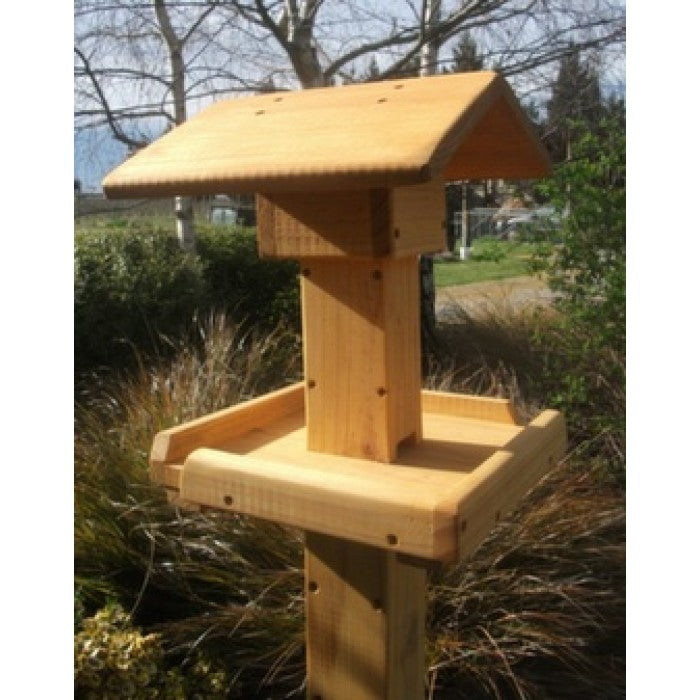
- The table should be safely away from cat ambush sites. A small bush or a tree about two meters from the table gives the birds somewhere safe to perch while they look to see if it is safe to feed, to ‘queue up’ for a place on the table, and to dash to if disturbed. It may take a few days before you see any birds on a new bird table.
- Once the birds discover the food and convince themselves it is safe, they should visit regularly.

- Clean your bird table regularly and never allow old food to accumulate. Dirty tables can harbor dangerous bacteria left by sick birds and start an outbreak of disease.
- Brush off all debris every time you put out fresh food, and scrub the table with a mild disinfectant solution or use a specially designed spray regularly: more frequently if sick birds visit.
- Move the bird table from time to time to stop the accumulation of droppings underneath.
- Some bird diseases can be transmitted to people. Although the risk is small, it is worth taking sensible hygienic precautions, such as wearing gloves when cleaning the table and avoiding breathing in the dust from it. Always wash your hands immediately after you have finished, and wash any soiled clothing in a normal wash.
- Some of the plastic style imported bird store bought flimsy bird feeders have a tendency to turn perish and crack in our New Zealand conditions. A wooden bird feeder is a natural material and one that the birds feel comfortable with.
- If you enjoy watching birds, consider providing a variety of feeding stations to attract more species. Hanging feeders with bird cake, seed or peanuts may attract different species to add variety and interest to your garden.
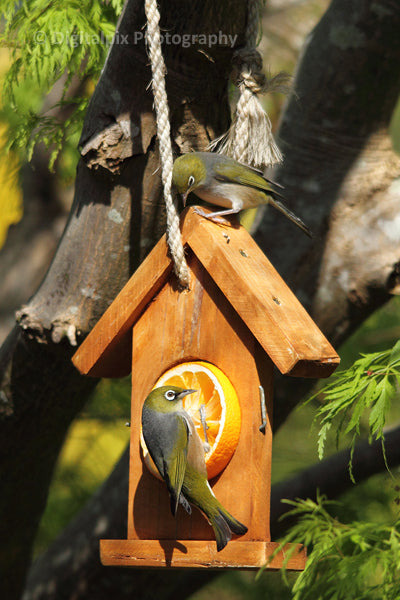
- The right planting and garden design provides the birds with food, shelter and nesting sites, and allows you to attract many birds into the garden.
- A bird bath can be a vital source of water for drinking and bathing, in both hot and cold weather.
- A wildlife pond will attract lots of beneficial insects, invertebrates to your garden.

